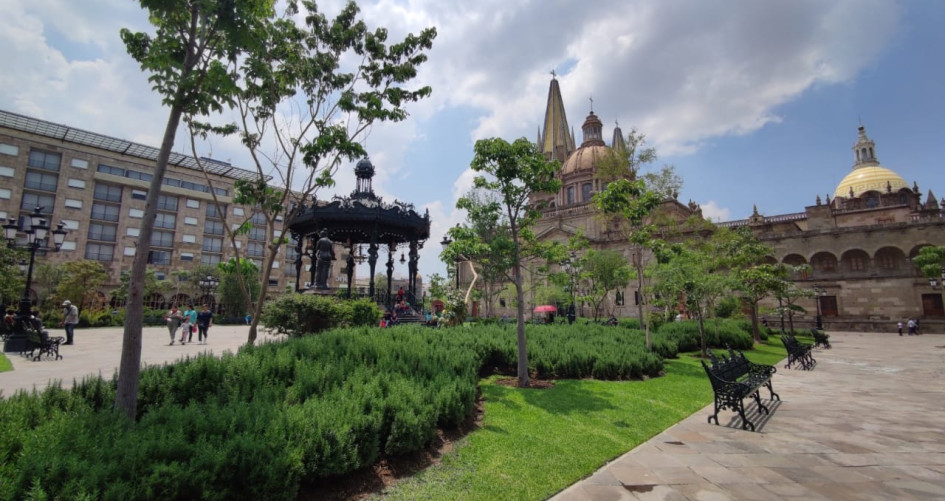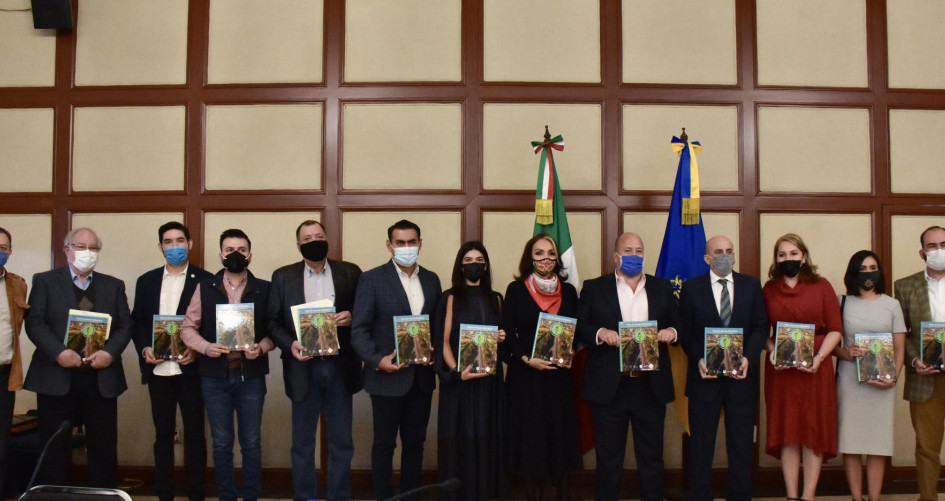The Metropolitan Area of Guadalajara Climate Action Plan, launched at the end of 2020, is the first instrument of its kind, built on a metropolitan scale in Mexico and within the C40 Network.
The Metropolitan Area of Guadalajara (AMG for its acronym in Spanish) is an international pioneer in promoting a plan with a metropolitan perspective, recognizing the strength of the metropolis. The PACmetro is a strategic planning instrument aligned with the objectives of the Paris Agreement and with Nationally Determined Contributions (NDC), which integrates in a socially inclusive and equitable manner the adaptation and mitigation components.
The three main objectives defined in the plan are: 1. A carbon neutral metropolis based on integrated waste management, mass and non-motorized mobility, efficient energy use and renewable energy supply, 2. An inclusive metropolis that is sustainable and resilient to climate impacts, 3. A coordinated, participatory and inclusive metropolis with climate leadership.
Key facts
- The Climate Action Plan includes all nine of the municipalities that make up the AMG.
- Since its publication in December 2020, the plan has been strengthened in terms of the number of actions and projects that contribute to the strategy, as of today, the instrument includes 3 objectives, 8 strategies, 29 global goals and 136 planned and / or in the process of implementation actions. The public bicycle expansion, for example, currently has 237 km of bicycle lanes and is expected to reach 436 km between 2021 and 2024. So far its implementation has avoided 17 million car trips per year and generated a reduction of 1,000 tonnes per year of CO2 emissions.
At the beginning of last July, the first 100% electric public transport route in the AMG began operations; it has 38 bus units that are mostly driven by women.
- Last September, the first session of the PACmetro Metropolitan Management Committee (MGPACmetro) was held, which in addition to monitoring the progress and compliance of the instrument, will help strengthen the alignment of transversal efforts to ensure, among other things, the allocation of resources, coordination of public policies and compliance with actions to meet the established mitigation and adaptation goals.
The challenge
Most of the metropolis’s territory is not urbanized; 78% corresponds to agricultural areas, pastures, forests and jungles. However, population and urban growth has transformed the natural environment, modifying the watercourses that run through the city, causing the loss of ecosystem services such as flood regulation, sediment control, temperature regulation and biodiversity support. Urban sprawl, in some cases in hazardous areas near National Protected Areas, has increased the risk of landslides in irregular settlements, which are mainly made up of low-income people.
Sustainable water resource management is a key issue for the AMG in the context of climate change. Among the main challenges are the clean-up of the Santiago River, which surrounds the eastern part of the area and is one of the most polluted rivers in the country. Another is the sustainable management of groundwater sources. It is estimated that more than 5,000 tonnes of solid urban waste are generated daily and arrive at one of the sanitary landfills in the metropolis. The AMG also experiences high levels of air pollution.
In terms of mitigation, based on the estimation and modelling of GHG emission reduction scenarios, it primarily considers sectors that contribute the most: energy (generation and final consumption), transportation (public and private vehicle fleet) and waste (waste treatment generated within the city limits), in a time frame that includes the periods 2030, 2040 and 2050.
The solution
Despite the enormous challenges listed above, until 2019 the AMG did not have an instrument to guide and articulate actions to combat climate change. The Climate Action Plan of the Metropolitan Area of Guadalajara (PACmetro, by its acronym in Spanish), launched at the end of 2020, is the first instrument of this nature, built on a metropolitan scale in Mexico and within the C40 Network.
It is important to emphasize that the different levels of government that converge in the metropolitan territory have developed different policies, actions, strategies, diagnoses and analyses that are part of the Plan. Some of the instruments and mechanisms in force in the different levels of government to which PACmetro is aligned are the State Governance and Development Plan (2018-2024), as well two important metro instruments, the Metropolitan Development Program 2042, the Metropolitan Territorial Ordering Plan and the recent Metropolitan Risk Atlas and various climate policy instruments, the State Climate Change Strategy and Action Program and the Municipal Climate Change Programs, which are planning instruments that direct the implementation of climate action at the local level that must align with state and federal level climate policies. The PACmetro has required coordination with the local governments of 9 metropolitan municipalities and the Government of the State of Jalisco. This coordination was possible since the AMG has a unique governance model in which the Institute of Planning and Development Management of the Metropolitan Area of Guadalajara (IMEPLAN) has facilitated the coordination and will continue to provide technical support to allow the fulfillment of the metropolitan climate objectives, goals and strategies.
Helping people
The implementation of the PACmetro will provide a better quality of life for the population, mainly by reducing the risks for those in areas that are more vulnerable to climate hazards. In addition, resilient and sustainable urban planning brings important co-benefits for the population, as it makes the metropolis a safe and sustainable place to live. The preservation of natural resources (green areas and water) will bring additional benefits in terms of quality of life and health, especially for the population with less access to these resources.
In addition to the main benefit of risk reduction with the implementation of these actions, the strategy contemplates the generation of co-benefits or additional benefits that impact different vulnerable groups: Low-income population and informal communities, who in some cases lack access to risk reduction information and infrastructure, as well as basic services. Older adults, children, people with disabilities and indigenous communities, who are vulnerable because they lack information to reduce risk and in some cases lack representation in decision making, so they do not receive differentiated information. Women for whom no water management training programs are targeted, despite the fact that they are typically the ones who manage household water use.
Spillover effect
The activity has the potential to be successfully replicated as the first metropolitan-scale plan with a planning and implementation process, far from the requirements of smaller cities. In this sense, the experience can be highly relevant for metropolises around the world, since the methodology used for its construction was developed by C40, a network of cities within which could be replicated with a metropolitan approach.
Within Mexico there are at least 10 metropolitan areas in which 37% of the country's population resides and which could potentially replicate the AMG’s climate planning exercise.




Images owned by the activity partners, all rights reserved.



